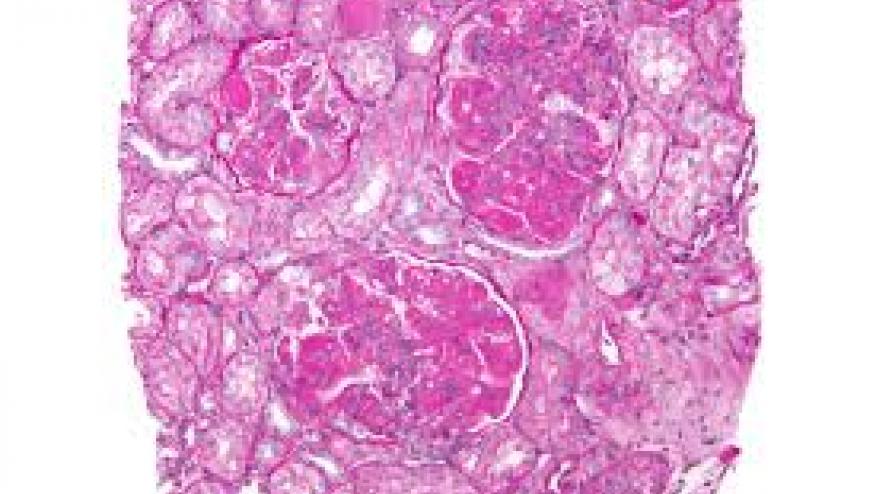Lupus Nephritis Despite Low Level Proteinuria Save

Kidney International reports on a series of systemic lupus erythematosus (SLE) patients, who despite inactive urinary sediment and low level proteinuria, had a high rate of glomerulonephritis (GN) proven by renal biopsy; moreover, the LN was not predicted by laboratory abnormalities.
A single center retrospective study included 87 SLE patients with proteinuria <1000 mg/24-hour proteinuria who also had their first kidney biopsy.
Among this SLE cohort with low level proteinuria (<1000 mg/24-hr), 60% were without AKI or active urinary sediment (hematuria). Biopsy evidence of lupus nephritis (LN) was present in 40 of 52 (76%).
From these biopsy-proven LN patients: 12/40 had class I or II, 14/40 had class III or IV GN, 8/40 had class V GN and 6 had a combined proliferative and membranous LN. Other non-lupus diagnoses were observed and included focal segmental glomerulosclerosis, acute interstitial nephritis, and others.
The histologic diagnosis of LN was predicted by patient’s age, low C3, low C4, anti-dsDNA antibodies; but with multivariate analyses, non of these parameters were predictive of LN.
The identification of lupus- or non–lupus-related glomerulonephritis does not appear to be easily identified on the basis of demographics, serologies or level of expressed proteinuria. Given the significant burden of LN, there is a significant need for better guidelines to expand kidney biopsy indications and better predictors and biomarkers of LN.










If you are a health practitioner, you may Login/Register to comment.
Due to the nature of these comment forums, only health practitioners are allowed to comment at this time.